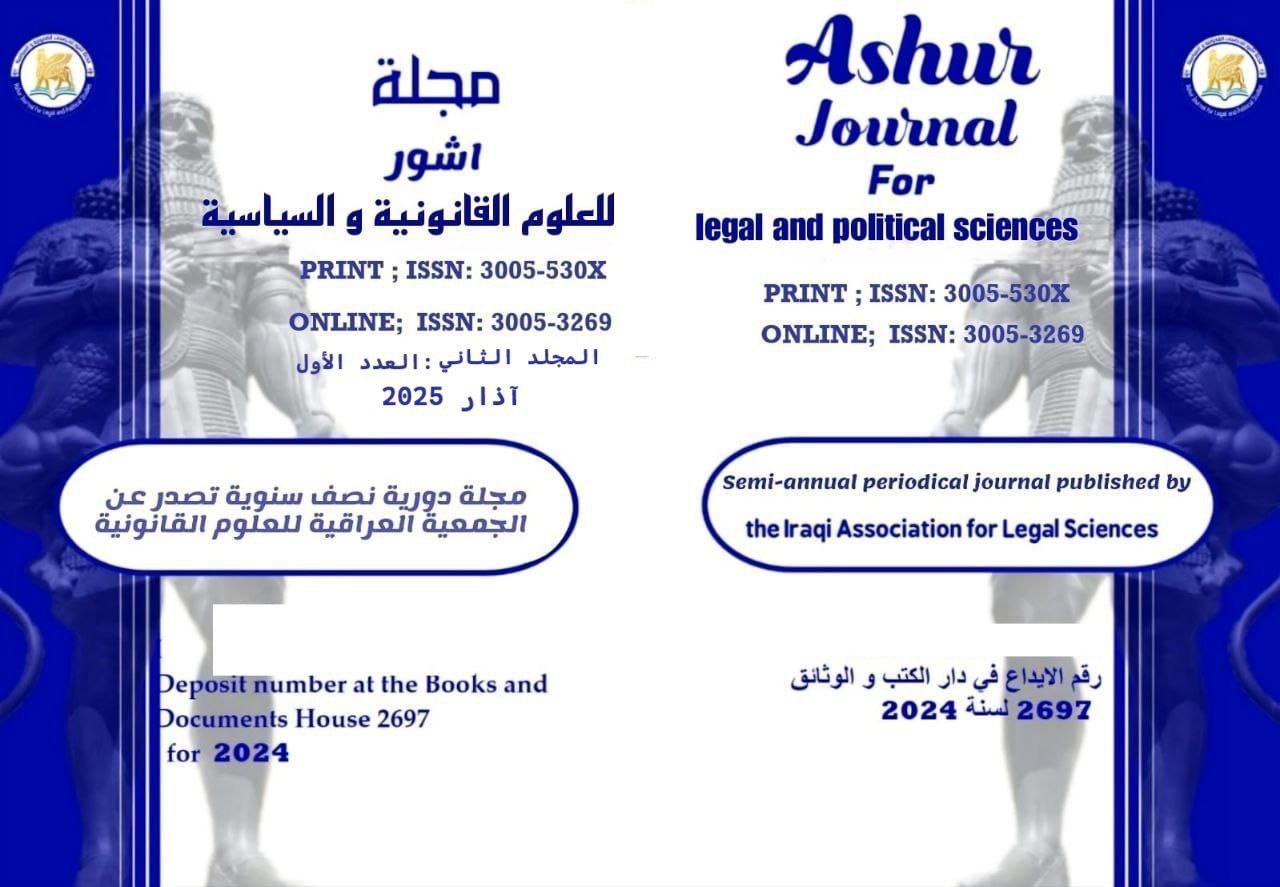التحديات الناشئة عن حرب المدن
DOI:
https://doi.org/10.64184/ajlps.V2.I1.Y2025.P455-470.73الكلمات المفتاحية:
الحرب ، المدن ، القانون الدولي الانساني ، القوة ، الاشتباكالملخص
ان حرب المدن تعد من الاشكال الاكثر تعقيد في الصراع العسكري ، إذ تدور عملياتها القتالية ضمن بيئات ذات طبيعة متحضرة وذات تشعب لأنها تشمل البنيات السكنية والشوارع والانفاق والمرافق ذات الطبيعة الحيوية، ويفرض هذا النوع الحروب الكثير من التحديات على المدنيين والقوات العسكرية على حد سواء ليتعدى ما يمكن ان تواجهه الجيوش في الحروب التقليدية ، وان من اهم التحديات التي تواجه الحروب هي الكثافة السكانية والتي تتمثل بوجود العديد من المدنيين في مناطق الاشتباك والتي تجعل قواعد الاشتباك اكثر تعقيداً ، فضلاً عن جعل الخسارات في ارواح الابرياء ممكنة وبأعداد كثيرة فضلاً عن الخراب الذي يلوح الابنية والانفاق والشوارع ولهذا من التحديات الكبيرة التي تواجهه هي الطبيعة المعمارية للمدن لان الحروب في المدن تكون بتعقيد كبير اكبر مما لو في ساحة قتال فضلاً ان هذه الطبيعة المعمارية تتيح فرصاً للكمائن وتعيق تحركات الآليات العسكرية هذا وان القيود القانونية والإنسانية التي تتمثل في ان القانون الدولي الإنساني يفرض ضغوطات كبيرة على استخدام القوة ، ما يزيد من صعوبة العمليات العسكرية فضلاً عن صعوبة إيصال الذخائر والمواد الطبية واللوجستية بسبب الحصار أو التدمير. ولهذا ان حرب المدن تتطلب مزيج من التخطيط العالي والمتقدم والدقة والانضباط مع العمل على تجنب الاضرار الجانبية قدر الامكان ، هذا وإن نجاح هذه العمليات في هذا النوع من الحروب يعتمد على مدى قدرة القوات على التكيف مع الواقع المعقد للبيئة الحضرية، وتحقيق التوازن بين الأهداف العسكرية والاعتبارات ذات الطبيعة الإنسانية.
المراجع
1. Qasim Amal and Hamaidi Aisha, Urban Warfare and Its Impact on the Effectiveness of International Humanitarian Law, a study published in the Academic Journal of Legal and Political Research, 2023, Volume 7, Issue 2, p. 1489.
2. Yaziji Amal, International Humanitarian Law and the Law of Armed Conflicts: Between Theory and Reality, Damascus Journal of Economic and Legal Sciences, Volume 20, Issue 1, 2004, p. 124.
3. Article 4/2 of the United Nations Charter.
4. Haider Kazim Abdul Ali, The Principle of Distinction between Civilians and Combatants in Light of the Provisions of International Humanitarian Law, Volume 1, Issue 22 (2013), Journal of the Islamic University College, 2013, pp. 4-6.
5. Muhammad Al-Zuhairi, International Humanitarian Law, Dar Al-Thaqafa Library, 2005, p. 152.
6. Dr. Suhail Hussein Al-Fatlawi, Principles of International Humanitarian Law, Protection of Civilians and Civilian Objects, Issam Press, Baghdad, 1990, p. 72. Dr. Salah El-Din Amer, The Distinction Between Combatants and Non-Combatants, a study published in the book (International Humanitarian Law: A Guide to National Implementation), p. 132.
7. Dr. Ahmed Moussa, International Humanitarian Law: Principles and Applications, Dar Al-Fikr Library, 2012, p. 98.
8. Dr. Mustafa El-Sayed, Foundations of International Humanitarian Law, Arab Scientific Publishing House, 2007, p. 112.
9. Dr. Ahmed Moussa, op. cit., p. 102.
10. Article 52 of the Fourth Geneva Convention states: "Civilian objects shall not be the object of attack unless they are being used for military purposes. Attacks shall be limited to military objectives, and all feasible measures shall be taken by belligerents to minimize collateral damage to civilian objects and civilians."
11. Andrew Clapham, "Human Rights and International Humanitarian Law : The Protections of Human Rights in Armed Conflicts", Oxford University Press, 2010, p88.
12. Michael N. Schmitt, "The Law of Armed Conflict: International Humanitarian Law in War", Oxford University Press, 2013, P241.
التنزيلات
منشور
إصدار
القسم
الرخصة

هذا العمل مرخص بموجب Creative Commons Attribution 4.0 International License.
يحتفظ المؤلفون بحقوق الطبع والنشر الكاملة لمقالهم المنشور.
تُطبّق مجلة آشور للعلوم القانونية والسياسية (AJLPS) رخصة المشاع الإبداعي المنسوبة 4.0 الدولية (CC BY 4.0) على مقالاتنا وأعمالنا الأخرى. إذا أرسلتَ بحثك للنشر من قِبل AJLPS، فإنك تُوافق على تطبيق رخصة CC BY 4.0 على عملك.
يمكن قراءة المقالات ومشاركتها وفقًا للشروط التالية:
النسبة: يجب أن تُنسب إلى المصدر الأصلي (Attribution).
التفاصيل الكاملة متوفرة على الرابط:
https://creativecommons.org/licenses/by/4.0/






